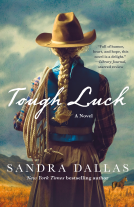
Cunning Folk
Life in the Era of Practical Magic
by Tabitha Stanmore
This title was previously available on NetGalley and is now archived.
Send NetGalley books directly to your Kindle or Kindle app
1
To read on a Kindle or Kindle app, please add kindle@netgalley.com as an approved email address to receive files in your Amazon account. Click here for step-by-step instructions.
2
Also find your Kindle email address within your Amazon account, and enter it here.
Pub Date May 28 2024 | Archive Date Jun 02 2024
Bloomsbury USA | Bloomsbury Publishing
Talking about this book? Use #CunningFolk #NetGalley. More hashtag tips!
Description
"Rich and lively."--New York Times Book Review
A vibrant look at an unsettled and strangely familiar time that overturns our assumptions about the history of magic.
Imagine: it's the year 1600 and you've lost your precious silver spoons, or maybe they've been stolen. Perhaps your child has a fever. Or you're facing a trial. Maybe you're looking for love or escaping a husband. What do you do?
In medieval and early modern Europe, your first port of call might have been cunning folk: practitioners of “service magic.” Neither feared (like witches), nor venerated (like saints), they were essential to daily life. For people across ages, genders, and social ranks, practical magic was a cherished resource for navigating life's many challenges.
In historian Tabitha Stanmore's beguiling account, we meet lovelorn widows, dissolute nobles, selfless healers, and renegade monks. We listen in on Queen Elizabeth I's astrology readings and track treasure hunters trying to unearth buried gold without upsetting the fairies that guard it. Much like us, premodern people lived in a bewildering world, buffeted by forces beyond their control. As Stanmore reveals, their faith in magic has much to teach about how to accommodate the irrational in our allegedly enlightened lives today.
Charming in every sense, Cunning Folk is at once an immersive reconstruction of a bygone era and a thought-provoking commentary on the beauty and bafflement of being human.
Available Editions
| EDITION | Other Format |
| ISBN | 9781639730537 |
| PRICE | $29.99 (USD) |
| PAGES | 272 |
Available on NetGalley
Featured Reviews
 Dalton S, Reviewer
Dalton S, Reviewer
Thank you NetGalley for a free e-galley of this book in exchange for an honest review.
Tabitha Stanmore's "Cunning Folk: Life in the Era of Practical Magic" is a fascinating and deeply researched journey into the world of medieval and early modern Europe's practitioners of “service magic.” This non-fiction work is a captivating exploration of how ordinary people, from all walks of life, sought the services of these individuals for everyday problems and ambitions. Stanmore's narrative brings to life a time when the supernatural was an integral part of the mundane, painting a vivid picture of a past that is both distant and strangely familiar.
The book is a spritely account that spans a broad spectrum of society, encompassing lovelorn widows, dissolute nobles, selfless healers, and even renegade monks. Stanmore's storytelling is particularly engaging when it delves into the personal stories of these individuals, such as Queen Elizabeth I's consultations with astrologers and the adventures of treasure hunters navigating the whims of protective fairies. These anecdotes not only entertain but also provide a deeper understanding of the societal context and beliefs of the time.
One of the book’s strengths lies in its ability to make historical content accessible and relatable. Stanmore connects the reliance on cunning folk in the past to contemporary human behaviors, exploring how people have always sought to make sense of and control the seemingly irrational aspects of their lives. This connection is not just an academic exercise but a profound commentary on the beauty and complexity of human nature.
However, readers seeking a more traditional history book might find the narrative's conversational tone and anecdotal structure different from their expectations. The book's focus on individual stories over a comprehensive historical analysis could be seen as a departure from conventional historical works.
"Cunning Folk" is a charming and insightful reconstruction of a bygone era, offering readers a unique window into the lives of people who navigated their world with a blend of practicality and belief in the supernatural. It is an excellent read for anyone interested in history, folklore, and the enduring human fascination with the magical and the mystical. Stanmore's work is a testament to the enduring allure of history and its relevance to understanding our present and future.
What a creative and fun take on making history accessible! This book is so thoroughly researched (well annotated with so many sources cited) and contains so much history, yet reads like relatable personal anecdotes. You almost forget you're reading about snippets of people's lives from 400 years ago. It can often be difficult to make history entertaining and easy to digest, even when it comes to witchcraft and practical magic, but Stanmore does just that. I much preferred this style of writing to the true textbook history analysis, as it's more suitable for integrating the folklore and charm. Overall, en enjoyable time - I learned so much without feeling like I was studying for a test, and came away with a greater understanding of why our ancestors turned to 'service magic' and how it's still so applicable today.
I love history and magic, and this book seemed right up my alley. While it isn’t a book on actually how to practice magic, it is chock full of history on how people used practitioners back in medieval times. it was extremely interesting and educational. I absolutely enjoyed it.
This was an absolutely fascinating read! It teaches us quite a few things on the cunning folk and the way of life in a time where it was very common and accepted. We think back and that’s not something that would first come to mind. I really enjoyed it.
An excellent deep-dive into the fascinating history of cunning folk across Europe, particularly England. Unlike other 'historical' accounts of the time, Stanmore is quick to note the differences between cunning folk and witches. This confusion is one found in many neo-pagan and modern occult books, which is a shame because it has infiltrated the pagan community so deeply, yet isn't based on any truth. Cunning folk were highly respected and completely separate from witches, so much so that very few cunning folk were ever tried as witches during the Burning Times. Any trial records for cunning folk are almost entirely for crimes outside of witchcraft, such as fraud, conspiracy to commit murder, or other unlawful acts. Stanmore does an excellent job separating cunning folk from witches using historical documentation and records from across Europe. Each chapter has stories interwoven throughout, connecting the magic back to the needs and desires of the time. I enjoyed her perspective, as well as her educated insight into the culture of cunning folk and how they were perceived throughout history.
Stanmore is truly an expert in her field and her research should not be taken lightly. I wish more modern pagan authors would turn to real historical documents instead of continuing to perpetuate misinformation. If you are interested in learning the real history of magic-practicing folk, this is the book for you. Highly recommend!
 Janalyn P, Reviewer
Janalyn P, Reviewer
Cunning Folk, life in the age of practical magic by Tabatha Stanmore is about life in the middle ages and there opinion and belief in magic. Whether it be tea leaf reading conjuring the answers with bread a mirror and many other different rituals the fact was there was a big belief in magic at that time. People from all walks of life spent their money and all their hope on many different types of conjurers astrologers and in some cases even the local vicar The reason we still answer the question what’s your sign on dating apps is because sometimes it even worked. In some cases a rational thinker could figure out the trick but there was still those cases that left the eyewitness is baffled. I loved this book and found it so truly interesting and wish I could write a great review to convince others to read this book but I think like me those who love the strange and different will definitely read this I love how in the book the author says that she doesn’t know if she believes they really had magic because she wasn’t there which I think is a fair humble statement and shows her intelligence. A lot of people would scorff and dismiss any belief in ferry‘s phase conjure‘s psychics ET see but that in my opinion shows a lack of intelligence such as passing opinions on those who lived at a time we have no clue what it was like and yet we are so confident we know what they should’ve done and how we would’ve done it so much better and that’s just ridiculous. Whether they had magic or not the book is still interesting to read and fun to ponder and just know you can laugh but you weren’t there. I love this book and definitely recommend it they have things in the book that are easy to figure out and then bears the stories that are unexplainable like the 12-year-old and the mirror he even have those using magic to try and gain romance kill the romantic partner and much more this book is just so so good. I want to thank bloomsbury academic for my free arc copy please forgive any mistakes as I am blind and dictate my review.
Readers who liked this book also liked:
Pamela Samuels Young; Dwayne Alexander Smith
Multicultural Interest, Mystery & Thrillers, Romance


















